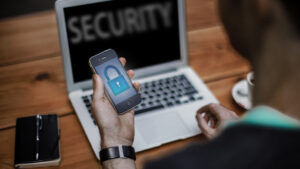Cybercrime is on the rise worldwide. Large-scale cyber-attacks are now frighteningly commonplace. Cyber-attacks can cost companies upwards of a billion dollars and can significantly damage a company’s reputation and tarnish the public’s trust. Cyber-attack may seem like something you can brush to the side. It’s unlikely for a small company, right? Think again! The data shows that small and mid-sized sized businesses (SMBs) are at growing risk of cyber-attack. In fact, one in forty small and medium-sized businesses may experience a cyber-attack.

or even mid-sized business could be catastrophic to its survival. Forgetting just the initial cost of the attack itself on the company infrastructure, you must also consider the cost of business loss. In this day and age, companies and even the regular person on the street cannot afford to take the risk of ignoring cyber security. Businesses must assess their risks and take the appropriate steps to secure their data and their systems. So what do we mean when we talk about cybercrime? Below are the two most common examples of cybercrime that SMBs and the public may face.
Page Contents
Ransomware
This is likely the cybercrime you are most familiar with. Ransomware is the most common form of cybercrime in the modern world. Ransomware accounts for millions of dollars stolen every year. The concept of ransomware is simple: it’s usually a type of malware that affects your files, either locking them from your use or encrypting them entirely. You want your files back; you pay the fee.
Ransomware, or more specifically the sinister malware it deploys, is often encountered and spread without the business or employee even realizing that anything has happened. Often this will be through an email or a program installed. Either of these scenarios could allow suspicious, unseen malware into your system.
Make no mistake; while these might seem like simple tricks, the criminals behind these attacks are sophisticated and organized. The nature of the attacks is constantly changing and evolving, and you must do the same.
Social engineering
Most individuals and businesses have likely been the subject of some form of phishing attack since the internet was born. Phishing attacks generally took the form of emails sent announcing some great news: you’ve won a large sum of money, follow this link to claim your prize.
Nowadays, scams can be more elaborate. The term social engineering is used to describe the various ways these criminals will target you and your business. The emails or messages (even internal!) you receive may look exactly like you might expect them to look. They might even bring you to a website that looks exactly like the correct company website. As we said, the world of cybercrime is evolving and changing rapidly. Suppose you have clicked on a link or have given out some information to a fraudulent site. In that case, the hackers may either sell your information to someone else or use that very information to gain access to your computer, or even worse, your or your company’s financial accounts. Phishing attacks can target both individuals and companies, so always be aware.
How to improve employee security?
Fortunately, there are several steps you can take to ensure your safety. As sophisticated as these attacks can be, often the biggest cause of a successful scam or a data breach is simple human error. Stringent training is essential to ensuring your information and systems stay secure.
Using a VPN
VPN stands for a Virtual Private Network. Using a VPN ensures that your information is encrypted when sent to or from your device. Basically, foreign bodies cannot see what you are doing on the internet and cannot access your device. A VPN for a PC is one of the easiest ways to secure your device and systems. What’s more, with the world making a change to remote working, a VPN is a great element of security if you are logging in to a remote desktop from home.
Protect your systems antivirus software
You should protect every device in your office or personal workspace with good antivirus software. It is also crucial to ensure you update your software regularly and never let your coverage lapse.
It is essential to always use a strong, secure, and unique password for each device. With a strong password, nobody can easily access all of your information if you lose your phone or laptop. In an office scenario, this is just as important: do not leave your computer unattended without password protection. When choosing a password, don’t use easy, guessable passwords. So, avoid your name, pet’s name, birthday, company name, or anything similar. Passwords should be 8 characters minimum and contain a mixture of upper and lowercase letters, numbers, and other special characters.
Use two-factor authentication
Two-factor authentication is essentially a second layer of security for your system. It works by asking for a second unique code or action before logging in. If you enter your username or password to a device, you may receive a text or email with a new code, that must also be entered for you to gain access. If you cannot enter the verification code you cannot access the account. If a hacker or criminal gains access to a password and username, it is essentially useless without having access to the device to which the code is sent. Two-Factor or multi-factor authentication is a good way of preventing illegal access to your systems.
Regularly backup your devices
Regularly backing up your files, whether personal or company-wide, is good practice. If you are hacked, and your data is compromised or encrypted, access to a backup file could just save your business.
At the end of the day, most cybercrimes – whether targeting personal users or SMBs – are brought about by individual error and carelessness. The best thing you can do is follow the steps above and regularly monitor and upgrade your security.
